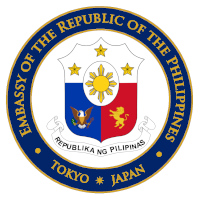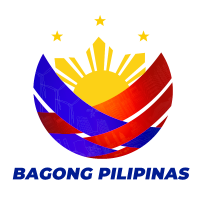FAQ
FREQUENTLY ASKED QUESTIONS ON GENDER AND DEVELOPMENT (GAD FAQS)
1. What is the GAD budget?
The GAD budget is the cost of implementing each activity indicated in the GAD plan. The GAD budget may be drawn from the agency’s MOOE, CO, and PS based on the agency’s approved GAA.
2. Is the GAD budget in addition to the agencies’ approved budget?
The GAD budget, which is the cost of implementing the GAD plan, shall form part of, and is not in addition to Posts and Offices’ approved budget. As provided in the Magna Carta of Women, “the cost of implementing GAD programs shall be the agency’s GAD budget which shall be at least five percent (5%) of the agency’s total budget appropriations.”
3. What can be and cannot be charged to the GAD budget?
In determining what can be or cannot be charged to GAD budget, the primary consideration is the gender issue being addressed by the expense or activity. If the gender issue is clear, the expense may be charged to the GAD budget.
Examples of expenses that CAN be charged to the GAD budget:
- Capacity development on GAD;
- Activities related to the establishment and strengthening of enabling mechanisms that support GAD efforts of agencies
- Salaries of agency personnel assigned to plan, implement and monitor GAD PAPs on a full-time basis, following government rules in hiring and creating positions;
- Agencies may cost the time spent of GFPS members and of agency personnel doing GAD related work and charge this to the GAD budget
- Agency programs that address women’s practical and strategic needs (e.g. daycare center, breastfeeding rooms, crisis or counseling rooms for abused women, halfway houses for trafficked women and children, gender-responsive family planning program among others);
- Consultations conducted by agencies to gather inputs for and/or to disseminate the GAD plan and budget;
- Payment of professional fees, honoraria and other services for gender experts or gender specialists engaged by agencies for GAD-related trainings and activities; and
- IEC materials (development, printing and dissemination) that support the GAD PAPs and objectives of the agency.
4. What should be given priority in GAD planning and budgeting?
Mainstreaming gender perspectives in an agency PAPs to attain the desired outcomes for GAD shall be a priority in GAD planning and budgeting. Using the GAD budget for gender mainstreaming is a way for agencies to influence the entire agency program, plan and budget. Thus, the utilization and outcome of the GAD budget shall be annually monitored and evaluated in terms of its success in influencing the gender-responsive implementation of the entire agency program, plan and budget.
5. What are the essential elements in GAD planning and Budgeting?
The following are the essential elements in GAD planning and budgeting as they enable agencies to more effectively plan and implement their sectoral programs on GAD:
- Creation and/or Strengthening of the GAD Focal Point System;
- Capability Building on Gender and Development including GAD-related laws and commitments for employees. Trainings should include but shall not be limited to gender mainstreaming, gender analysis and gender-responsive planning and budgeting;
- Conduct of Gender audit; and
- Institutionalizing GAD Database/Sex-disaggregated Data.
6. When is GAD Planning and Budgeting conducted?
GAD Planning and Budgeting shall be conducted annually as part of the all programming and budgeting exercises of agencies.
7. How often is GAD planning and budgeting done by government agencies?
Agency GAD Focal Point System (GFPS) shall take the lead in mainstreaming gender in agency PAPs. As such, they shall coordinate the preparation of the agency GAD Plan and Budget and the GAD Accomplishment Report, monitor its implementation and report on its results.
8. What tools can be used in assessing the gender-responsiveness of the agency’s policies and major programs and projects?
- Agencies may use the Harmonized Gender and Development Guidelines (HGDG) test to assess the gender-responsiveness of its major programs and projects.
- Another self-assessment tool is the Gender Mainstreaming Evaluation Framework (GMEF). The GMEF is a tool to measure the extent of the gender mainstreaming efforts of organizations. It is also meant to assist the GAD Focal Point System (GFPS) members in measuring gains and successes, as well as pinpoint areas for improvement in the way they mainstream the gender and development perspective in their respective organizations.
9. What is GAD attribution?
Attribution to the GAD budget of a portion or the whole of the budget of an agency’s major programs or projects is a means toward gradually increasing the gender responsiveness of government programs and budgets.
An agency may attribute a portion or the whole budget of the year of major programs/project during the GAD planning and budgeting phase by subjecting the program documents to gender analysis using the appropriate Harmonized Gender and Development Guidelines (HGDG) design checklists.
10. What DFA program expenditures may be attributed to GAD?
- Expenses relating to participation to international conferences and engagements relating to the Peace Processes, Philippine responses to terrorism, transnational crimes and non-traditional security threats through regional and bilateral cooperation with components on women participation.
- Expenses on the hosting and chairmanship of ASEAN pertaining to the discussions/meetings advancing the interests of women in the region
- Expenses relating to the negotiations conducted to include promotion of trade, investment, tourism and services that lead to the country’s economic development with components on women participation.
- Expenses relating to consultations conducted with government agencies for exchanging economic information that may have GAD component.
- Expenses relating to the preparation of sex-disaggregated data on overseas Filipinos within FSPs territorial jurisdiction.
- Expenses incurred for the promotion and protection of the rights of overseas Filipinos, including Filipino women migrant workers, through the provision of sufficient ATN services which include but not limited to assisting in claims for financial support, whereabouts, jail visitation, counselling, providing food and shelter, upgrading of skills, repatriation, employment-related dispute resolution or mediation, and even referral to appropriate institutions in the host government or in the Philippines.
- Expenses for meetings or conferences with partner agencies and civil society organizations at bilateral, regional or international level to adopt relevant migration policies and positions harmonizing the delivery of ATN services to distressed Filipinos overseas, especially women migrant workers.
- Expenses incurred for the promotion of Filipino culture, values, and identity with components on women participation.
- Submission of sex-disaggregated reports on trafficking in persons, illegal recruitment and violence against women and children.
- Conduct of medical and wellness missions to FSPs with high concentration of distressed Filipinos including women in detention or sheltered in the Migrant Workers and Overseas Filipinos Resource Center.
- ICT programs that generate sex-disaggregated data of consular services.
- Conduct of Consular Outreach programs or Mobile passporting services with components on women participation.
- Training/Seminar/Lecture on Sexual Harassment and Magna Carta of Women.
- Expenses relative to the participation in scholarship programs on GAD-related topics
- Skills training for women and other gender (LGBT, etc.)
- Livelihood training for women and other gender (LGBT, etc.)
- Expenses for infrastructure that has GAD implications (lactation rooms, well-maintained comfort rooms, provision of bidets).
- Expenses for sending women personnel to various conferences thereby empowering them.
- Expenses for the salary of GAD Focal Persons and ATN officers.
- Expenses incurred for drafting of policy, department orders, etc. on labor standards, which gives special attention to the special needs of women.
- Expenses for the counseling, psychosocial services extended to men and women.
- Expenses incurred for investigation of sexual harassment cases or work-related cases that involve gender sensitivity issues.
- Expenses for the procurement or development of software that makes work for men and women easier and lighter.
- Expenses for the provision of facilities to address special needs of men and women.
- Expenses for film-showing and other related activities meant to spread gender sensitivity awareness.
- Expenses for attending interviews and public gatherings discussing GAD issues.
- Expenses for Civil Registration of births, deaths and marriages.
- Expenses for legal services and the salaries of legal retainers at Post with components on women participation.
































